GENERAL DATA
Plant parts: Leaf, Whole Plant
Cultivation mode: Wild collection/Cultivated
In manufacturing: Pharmaceutical, extract, lotion, skincare, haircare, toothpaste, cosmetics, insecticides, perfumery, beverages, alcoholic drink, confectionary.
In food: Tea, spice, chewing gum, candy, chocolate, cookies, jelly.
🌿 Industries That Use Peppermint Leaves (Mentha piperita L.)
Peppermint leaves, derived from the Mentha piperita plant—a natural hybrid of Mentha aquatica and Mentha spicata—are widely known for their menthol-rich aroma, cooling flavor, and therapeutic value. Rich in essential oils, flavonoids, and rosmarinic acid, these leaves are used across numerous industries, including pharmaceutical, food and beverage, cosmetics, aromatherapy, and wellness formulations.
1. Pharmaceutical & Traditional Medicine Industry
Peppermint leaves are used globally in conventional and herbal medicine systems.
Applications:
-
Digestive support: relieves bloating, gas, and stomach cramps
-
Respiratory aid: soothes sore throats, coughs, and mild sinus congestion
-
Topical pain relief: used in balms and compresses for headaches and muscle tension
-
Antimicrobial and antispasmodic properties used in gut health formulas
✅ Found in capsules, teas, tinctures, syrups, and topical ointments
2. Food & Beverage Industry
Peppermint is a key ingredient in both functional foods and gourmet recipes.
Applications:
-
Flavoring for teas, chocolates, syrups, candies, and chewing gum
-
Used in desserts, smoothies, and confectionery items
-
Common in digestive herbal infusions and cold beverages
✅ Valued for its natural cooling effect and sweet, minty flavor
3. Herbal & Nutraceutical Industry
Widely used in wellness products for digestive health, relaxation, and immune function.
Applications:
-
Herbal teas and tinctures for stress and digestion
-
Immune support blends with Echinacea, Licorice, or Elderflower
-
Used in gut-soothing capsules and adaptogenic formulas
✅ Frequently paired with Chamomile, Lemon Balm, or Fennel
4. Cosmetic & Personal Care Industry
Peppermint leaf extracts and essential oils are used in skin and body care products.
Applications:
-
Added to cooling gels, shampoos, toners, and scrubs
-
Common in foot creams, lip balms, and clarifying facial products
-
Refreshes and soothes itchy or inflamed skin
✅ Known for its anti-inflammatory, antiseptic, and invigorating properties
5. Essential Oil & Aromatherapy Industry
Peppermint essential oil (distilled from the leaves) is one of the most widely used in aromatherapy.
Applications:
-
Used in diffusers to relieve mental fatigue and support alertness
-
Applied topically (diluted) for tension relief and muscle recovery
-
Key component in sinus blends, focus blends, and respiratory support oils
✅ Rich in menthol, menthone, and eucalyptol
6. Oral Care & Hygiene Industry
The strong antimicrobial and refreshing action of peppermint makes it a natural choice in oral products.
Applications:
-
Used in toothpastes, mouthwashes, dental powders, and breath sprays
-
Combines flavor and bacterial control for dental hygiene
-
Found in sugar-free chewing gums and whitening powders
✅ Often paired with baking soda or tea tree oil
7. Aromatic, Cleaning & Wellness Products
Peppermint is used in natural cleaning products and home care.
Applications:
-
Added to herbal surface sprays and disinfectants
-
Used in steam inhalation blends and herbal bath soaks
-
Included in natural insect repellents
✅ Brings a refreshing and purifying aroma to blends
✅ Summary of Key Applications
| Industry | Common Uses |
|---|---|
| Pharmaceutical & Medicinal | Digestive support, headache relief, respiratory aid |
| Food & Beverage | Mint teas, candies, chocolate, liqueurs |
| Herbal & Nutraceutical | Tinctures, digestive blends, immune support |
| Cosmetic & Skincare | Cooling creams, toners, anti-itch formulas |
| Aromatherapy | Mental clarity, sinus relief, muscle tension |
| Oral Care | Toothpaste, mouthwash, breath sprays |
| Natural Hygiene & Wellness | Herbal sprays, bath products, repellents |
🌟 Key Features
-
Contains menthol, menthone, flavonoids, and polyphenols
-
Used in both hot and cold applications for relief and refreshment
-
Found in loose-leaf, powdered, essential oil, and extract forms
-
Widely accepted in both traditional medicine and modern formulations
-
One of the most diverse and popular herbs in global botanical markets
🌿 Industries That Use Peppermint Root (Mentha piperita L.)
While most commercial attention focuses on peppermint leaves and essential oil, peppermint root is an underutilized yet pharmacologically active part of the plant. Rich in phenolic acids, lignans, and trace essential oils, the root system of Mentha piperita is increasingly explored in herbal medicine, botanical research, and soil-enhancing agricultural applications. It offers potential in detoxification support, gut health, and even crop rotation systems due to its antimicrobial action.
1. Herbal & Traditional Medicine Industry
Though not widely used in mainstream phytotherapy, peppermint root has historical and niche medicinal uses.
Applications:
-
Used in detoxification decoctions and liver-support herbal blends
-
Sometimes included in digestive tonics to enhance gastrointestinal resilience
-
Traditional uses in kidney/bladder tonics in Persian and folk herbal systems
✅ Typically consumed as root decoctions, sometimes blended with Burdock or Dandelion
2. Nutraceutical & Botanical Research Industry
Peppermint roots are studied for their bioactive phenolics and prebiotic potential.
Applications:
-
Investigated for their gut microbiota modulation and liver protective effects
-
Used in experimental tinctures and functional food prototypes
-
Potential source of inulin-type polysaccharides or fibrous compounds
✅ Appears in clinical trials exploring plant root synergies for digestion and detox
3. Agricultural & Ecological Industry
As a part of the mint family, peppermint roots offer allelopathic and soil-enhancing benefits.
Applications:
-
Used in intercropping and crop rotation systems for their mild natural pest-repellent effects
-
Promotes soil microbiome health and may suppress some soil-borne pathogens
-
Root biomass used in green manure, compost teas, or regenerative soil treatments
✅ Recognized for soil conditioning in organic agriculture
4. Aromatherapy & Botanical Extraction (Experimental Use)
Though not commercially significant, peppermint roots have trace amounts of aromatic constituents.
Applications:
-
Sometimes extracted in root-infused carrier oils for deep muscle relief
-
Used in experimental root tinctures or multi-part plant formulations
-
Occasionally paired with leaves to create “whole-plant” aromatherapy profiles
✅ Mostly custom or artisanal products, not mass-market
5. Ethnobotanical & Folk Herbalism
Peppermint root is mentioned in traditional and regional medicine systems, especially in Middle Eastern and European folk use.
Applications:
-
Added to blood-purifying herbal mixtures
-
Used in herbal foot soaks for lymphatic stimulation
-
Combined with Fennel, Parsley, or Celery seeds for gut cleansing rituals
✅ Still relatively rare in modern herbal shops
✅ Summary of Key Applications
| Industry | Common Uses |
|---|---|
| Herbal & Traditional Medicine | Detox blends, digestive decoctions, liver support |
| Nutraceutical & Research | Prebiotic and gut health studies, botanical trials |
| Agricultural & Ecological | Soil enhancement, pest suppression, green manure |
| Aromatherapy (Experimental) | Infused oils, root tinctures, muscle-relaxing products |
| Ethnobotanical Use | Foot soaks, cleansing tonics, lymphatic support |
🌟 Key Features
-
Less aromatic than leaves, but contains phenolic acids and prebiotic fibers
-
Shows potential in gut-liver axis and soil regeneration science
-
Typically used in decoction, powdered root, or tincture form
-
Experimental but promising part of the whole-plant utilization movement
-
Often overshadowed by the leaves but valued in traditional detox formulas
🌿 Comparison: Peppermint Leaves vs Roots
(Mentha piperita L.)
| Aspect | Peppermint Leaves | Peppermint Roots |
|---|---|---|
| Botanical Part | Aerial part (herbaceous green leaves) | Underground root system (fibrous rhizomes) |
| Main Compounds | Menthol, menthone, limonene, flavonoids | Phenolic acids, lignans, fibers, trace essential oils |
| Aroma & Flavor | Strong, cool, sweet minty aroma and flavor | Earthy, mild, bitter with little aroma |
| Primary Use | Flavoring, fragrance, medicinal herb | Detoxification, gut-liver support, soil health |
| Medicinal Use | Digestive aid, antispasmodic, decongestant | Mild liver tonic, lymphatic and prebiotic use |
| Culinary Use | Widely used (teas, desserts, gum, oils) | Not used in food products |
| Cosmetic Use | Face masks, shampoos, lip balms, toners | Rare (sometimes in detoxifying bath soaks or infused oils) |
| Aromatherapy | Major source of peppermint essential oil | Rare, low aroma, used in whole-plant infusions |
| Formulation Formats | Dried leaves, essential oil, tinctures, teas | Powdered root, decoctions, tinctures, infusions |
| Industry Usage | Extensive: food, pharma, skincare, hygiene | Niche: herbal detox, research, eco-agriculture |
| Commercial Value | High and widely traded | Low and underutilized |
✅ Summary Comparison
| Category | Leaves | Roots |
|---|---|---|
| Volatile Oils | High (menthol-rich) | Very low |
| Flavor Profile | Cooling, aromatic | Mild, earthy |
| Market Focus | Culinary, cosmetic, pharma | Herbal detox, agriculture |
| Availability | Mass-produced and globally marketed | Rare, available via herbalists or in raw form |
| Pharmacological Role | Antispasmodic, anti-inflammatory | Detoxifying, mildly laxative, prebiotic |
| Sustainability Role | Used for extracts | Useful in soil enhancement and regenerative farming |
🌟 Final Notes
-
Peppermint Leaves are the core functional part used in most commercial and traditional applications due to their high menthol content and aromatic strength.
-
Peppermint Roots, though underutilized, show promise in detoxification, gut-liver health, and ecological farming, especially in herbalist and research circles.
-
Together, they offer a holistic approach to whole-plant utilization.
PRODUCT NAME IN DIFFERENT LANGUAGES
Persian Name: نعناء فلفلی/ Nana Felfeli
German Name (Deutschland, Austria, Switzerland): Pfefferminze
French Name (France, Belgium, Switzerland, Quebec): Menthe poivrée
HARVEST CALENDAR
Feb
Mar
Apr
May
Jun
Jul
Aug
Sep
Oct
Nov
Dec
To order dried peppermint leaves, please contact us.
The leaves are slightly elongated, almond-shaped and pointed. Their side is jagged and they grow without petiole and crosswise. The leaves veins are seen as well-defined depressions. These leaves are fragrant and have slightly chilly taste.
Mentha Piperita Chemical Constituents
Menthol, Menthone, Menthyl Acetate, Cineole, Limonene, Beta-pinene, Beta-caryophyllene.
Peppermint Temperament
Hot and dry.
3. Brew it, sweeten it with honey and drink it. It has a noticeable effect in relieving convulsion, especially respiratory convulsion, and is useful for asthma which is caused by moisture.
4. If you pound it gently and put it in “Sekanjebin” and eat it, it will eliminate the effect of bee stings, and if you eat it with honey, it will relieve scorpion sting pain.
5. Women who have a dead fetus in their womb should eat plenty of it. It stimulates the muscles of the uterine wall and removes the dead fetus.
6. Brew 12 to 16 grams of dry Peppermint in a liter of boiling water and sweeten it with sugar, then gently pound some Gum Arabic and dissolve in it and drink it gradually. It is effective in relieving pertussis, intermittent coughs, flu, and cold and for poor eyesight.
7. If you bathe the child in its brewed water, it cures children rickets.
8. Rubbing its essential oil on the body is useful for relieving the pain of gout, sciatica and rheumatism, relieves phlegm diseases and chest pain.
9. Sniff its powder. Prevents nosebleeds.
10. Its suppository is effective for scenting the uterus.
Peppermint Side Effects
Excess eating of it is harmful.
To order peppermint tea leaves, please contact us.

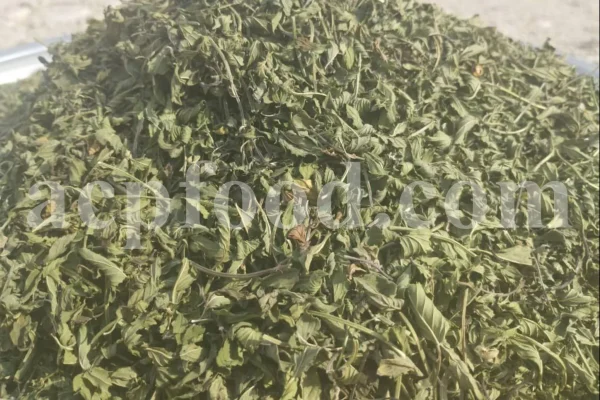
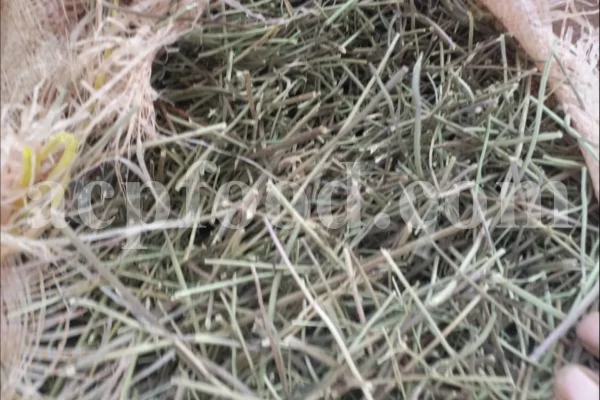
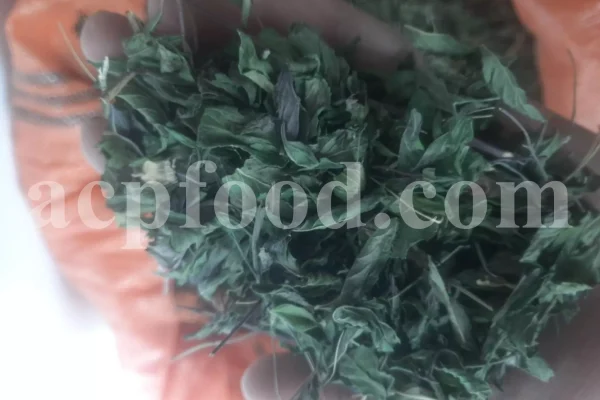

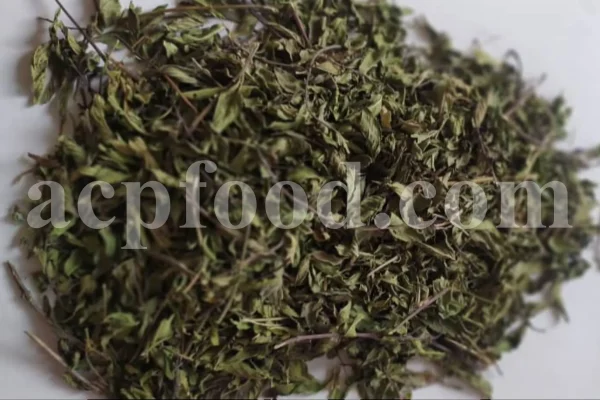



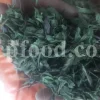
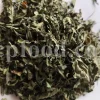
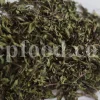


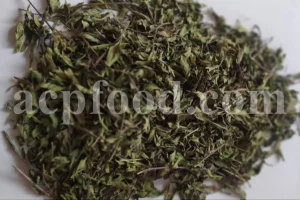
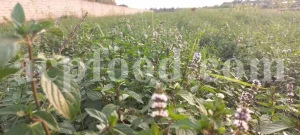



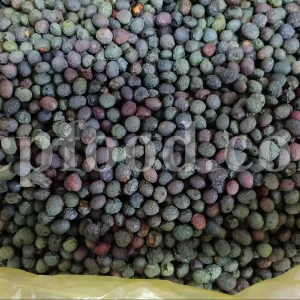
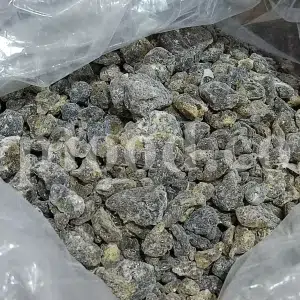
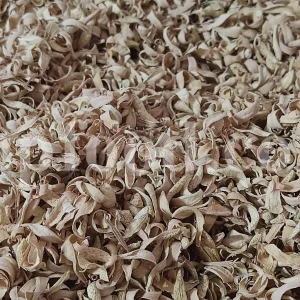

Reviews
There are no reviews yet.